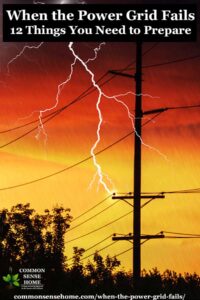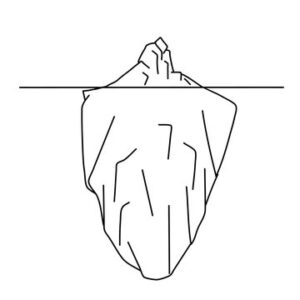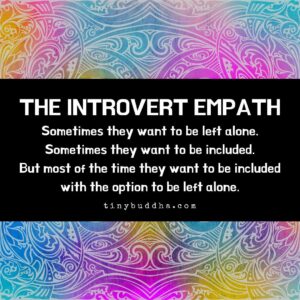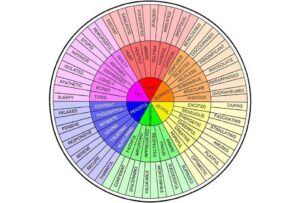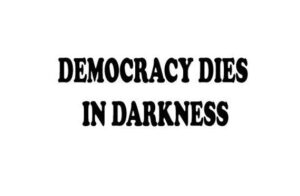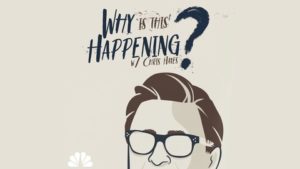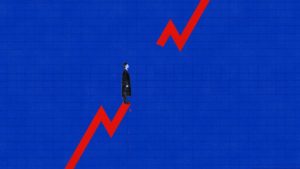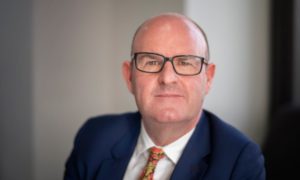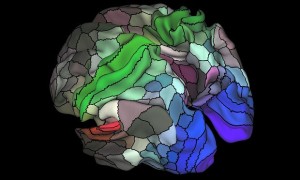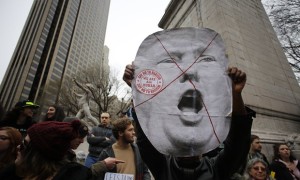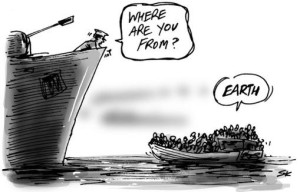The Guardian
23 Minute Must See Tutorial
November 9, 2021Last Week Tonight with John Oliver
“The physical generation of renewable energy isn’t really the problem here,” Oliver explained. “The key issue is the transmission of it. Basically, how do you get that energy from where it’s made, like a wind farm in Wyoming, to where it is needed, which could be a thousand miles away.”
The Guardian
The answer is transmission lines, “the absolute heart of our grid, and we’re going to need more of them”, said Oliver. But there are several difficulties to refreshed transmission lines, starting with location: building hundreds of miles of lines is a logistical nightmare, and local opposition to bigger towers can derail plans for years.
Basically, how do you get that energy from where it’s made, like a wind farm in Wyoming, to where it is needed, which could be a thousand miles away.”
“But the key thing going forward here might be to start thinking about this differently than we currently are, because for far too long, whenever we’ve experienced blackouts, we tend to think of it as the power gird ‘failing’. But the truth is, it’s not failing us; we are failing it, by asking it to do something it was not designed to do, in conditions that it was not designed to handle.”
https://www.theguardian.com/tv-and-radio/2021/nov/08/john-oliver-us-power-grid
Complimentary reading:
In this New York Times bestselling investigation, Ted Koppel reveals that a major cyberattack on America’s power grid is not only possible but likely, that it would be devastating, and that the United States is shockingly unprepared.
“Imagine a blackout lasting not days, but weeks or months. Tens of millions of people over several states are affected. For those without access to a generator, there is no running water, no sewage, no refrigeration or light. Food and medical supplies are dwindling. Devices we rely on have gone dark. Banks no longer function, looting is widespread, and law and order are being tested as never before.
It isn’t just a scenario. A well-designed attack on just one of the nation’s three electric power grids could cripple much of our infrastructure—and in the age of cyberwarfare, a laptop has become the only necessary weapon. Several nations hostile to the United States could launch such an assault at any time. In fact, as a former chief scientist of the NSA reveals, China and Russia have already penetrated the grid. And a cybersecurity advisor to President Obama believes that independent actors—from “hacktivists” to terrorists—have the capability as well. “It’s not a question of if,” says Centcom Commander General Lloyd Austin, “it’s a question of when.”
And yet, as Koppel makes clear, the federal government, while well prepared for natural disasters, has no plan for the aftermath of an attack on the power grid. The current Secretary of Homeland Security suggests keeping a battery-powered radio.
In the absence of a government plan, some individuals and communities have taken matters into their own hands. Among the nation’s estimated three million “preppers,” we meet one whose doomsday retreat includes a newly excavated three-acre lake, stocked with fish, and a Wyoming homesteader so self-sufficient that he crafted the thousands of adobe bricks in his house by hand. We also see the unrivaled disaster preparedness of the Mormon church, with its enormous storehouses, high-tech dairies, orchards, and proprietary trucking company – the fruits of a long tradition of anticipating the worst. But how, Koppel asks, will ordinary civilians survive?”
Additional consideration:
When the Power Grid Fails – 12 Things You Need to Prepare
getting older. It is reaching capacity and it is under attack. As of 2021, the average age of the power grid is 31 years old. Power outages are over 2.5 times more likely than they were in 1984.
In the article Bracing for a big power grid attack: ‘One is too many’, USA Today states “About once every four days, part of the nation’s power grid — a system whose failure could leave millions in the dark — is struck by a cyber or physical attack.” Without a plan in place, most of us would be in bad shape with an extended grid outage. Power outages cost between $18 and $33 billion per year in the United States.
- Lighting
- Batteries
- Water
- Toilet
- Garbage
- Back-up Power
- Off Grid Cooking Supplies
- Food
- Heating and Cooling
- Communications
- First Aid Supplies
- Everything Else
https://commonsensehome.com/when-the-power-grid-fails/
Covid’s Delta
June 23, 2021The New Yorker
The Delta Variant Is a Grave Danger to the Unvaccinated
One half of America is protected. The other is approaching a perilous moment in the pandemic.
by Dhruv Khullar, a contributing writer at The New Yorker, is a practicing physician and an assistant professor at Weill Cornell Medical College.
Experts believe that the Delta variant is 60% more transmissible than Alpha, or the UK variant.
The variant now represents more than 20% of coronavirus infections in the U.S. in the last two weeks, or double what it was when the CDC last reported on the variant’s prevalence. [USA Today]
“The good news is that we have vaccines that can squash the Delta variant,” Eric Topol, the director of the Scripps Research Translational Institute, told me. “The bad news is that not nearly enough people have been vaccinated. A substantial share of Americans are sitting ducks.” He went on, “We haven’t built a strong enough vaccination wall yet. We need a Delta wall”—a level of vaccination that will prevent the new variant from spreading. “There are still large unvaccinated pockets in the country where this could get ugly,” Topol added. Because about half of Americans are vaccinated, and millions more have some immunity from prior infection, the Delta variant “won’t cause monster spikes that overwhelm the health system,” Topol said. But Delta spreads so easily among the unvaccinated that some communities could experience meaningful increases in death and disease this summer and fall.
In a recent piece, I likened a society that’s reopening while partially vaccinated to a ship approaching an iceberg. The ship is the return to normal life and the viral exposure that it brings; the iceberg is the population of unvaccinated people. Precautions such as social distancing can slow the speed of the ship, and vaccination can shrink the size of the iceberg. But, in any reopening society that’s failed to vaccinate everyone, a collision between the virus and the vulnerable is inevitable.
Because of its exceptional transmissibility, the Delta variant is almost certain to intensify the force of the collision. The U.K., by postponing a full reopening, is trying to soften the blow. But the U.S. is pressing ahead—perhaps out of hubris, or because officials hope that our vaccination campaign can outrun the spread of Delta. Last week, New York and California, among the pandemic’s hardest-hit states, did away with virtually all restrictions. Meanwhile, states with half the vaccination rates of New York or California have been open for weeks. A lot depends on where, and how fast, Delta is spreading.
AXIOS:
The rapid spread of the B.1.617 (Delta) variant first discovered in India is making the second dose “more important now than ever before,” state epidemiologist Rachel Herlihy said Monday.
- Colorado has the second-highest proportion of the variant in the nation and the fifth-highest overall positivity rate.
The Guardian:
‘Two Americas’ may emerge as Delta variant spreads and vaccination rates drop
Biden’s 70% vaccination target by Fourth of July likely to fall short as efforts to entice people to get shots have lost their initial impact
“I certainly don’t see things getting any better if we don’t increase our vaccination rate,” Scott Allen of the county health unit in Webster, Missouri, told Politico. The state has seen daily infections and hospitalizations to nearly double over the last two weeks.
Only 52% of Republicans said they were partially or fully vaccinated, and 29% said they have no intention of getting a vaccine, according to a CBS News/YouGov poll. 77% of Democrats said they were already vaccinated, with just 5% responding that were resisting the vaccine.
“I call it two Covid nations,” Peter Hotez, a vaccine researcher at Baylor College of Medicine in Houston, told BuzzFeed News.
Bette Korber, a computational biologist at the Los Alamos National Laboratory in New Mexico, said she expected variant Delta to become the most common variant in the US within weeks. “It’s really moving quickly,” Korber told Buzzfeed.
The shift.
May 7, 2021Suddenly, today, I panicked about life inching back toward “normal.” I don’t want to travel endlessly for work. I don’t want my weekends to be over-committed with activities. I don’t want to miss bedtime with my kid. I don’t want to wear blazers — or, hell, even shoes.
-Emily Ramshaw, Co-founder & CEO 19th News.
For many of us the prospect of being is terrifying and so we go on saying, “I’m good” when in fact we are struggling or overwhelmed. This allegiance to the social convention that everything is okay is fatiguing and prevents us from receiving care and building deep connections with others. David Whyte, a Poet, writes, “in refusing our vulnerability we refuse the help needed at every turn of our existence and immobilize the essential, tidal and conversational foundations of our identity.”
-Ryan Redman, The Flourish Foundation
NEW: ‘The Centers for Disease Control and Prevention now states explicitly — in large, bold lettering — that airborne virus can be inhaled even when one is more than six feet away from an infected individual. “If you’re in a poorly ventilated environment, virus is going to build up in the air, and everyone who’s in that room is going to be exposed.” [Friday, May 7th]
The Guardian
Fears Covid anxiety syndrome could stop people reintegrating
Natalie Grover Science correspondent
Scientists have expressed concern that residual anxiety over coronavirus may have led some people to develop compulsive hygiene habits that could prevent them from reintegrating into the outside world, even though Covid hospitalisations and deaths in the UK are coming down.
The concept of “Covid anxiety syndrome” was first theorised by professors last year, when Ana Nikčević, of Kingston University, and Marcantonio Spada, at London South Bank University, noticed people were developing a particular set of traits in response to Covid.
The anxiety syndrome is characterised by compulsively checking for symptoms of Covid, avoidance of public places, and obsessive cleaning, a pattern of “maladaptive behaviours” adopted when the pandemic started. Now researchers have raised the alarm that the obsessive worrying and threat avoidance, including being unwilling to take public transport or bleaching your home for hours, will not subside easily, even as Covid is controlled.
“Fear is normal. You and I are supposed to fear the virus because it’s dangerous. The difference, however, in terms of developing a psychopathological response is whether you end up behaving in … overly safe ways that lock you into the fear,” said Spada. “My expectation is we’re going to have … chunks of the population that are avoiding re-engagement and constantly worrying about the virus for months to come, whether they are vaccinated or not.”
Dr Giovanni Mansueto, of the University of Florence, is investigating the syndrome in Italy and says he has seen some evidence of it in his clinical practice. It was important not only to identify the syndrome but to find ways to treat and prevent it, he said, “otherwise, this could be a big problem”.
Even after being fully vaccinated, many still wrestle with a fear of catching Covid
“I don’t want to be sitting in a movie theater with ‘patient zero’ of a variant that bucks the vaccine.”
NBC
By Elizabeth Chuck
Since the start of the pandemic, Kit Breshears has been terrified of catching the coronavirus. Getting vaccinated did not magically change that.
For the past 13 months, Breshears, 44, of Buffalo, Minnesota, has not stepped foot inside a store or restaurant, not even to pick up a takeout meal. Any visits with family and friends have been over Zoom.
When he received his second Covid-19 shot earlier this month, he felt relief, he said — but with the pandemic still ongoing, he has found it impossible to turn off his anxiety.
“My fear is that enough people are not going to get vaccinated, or they’re not going to get vaccinated in a timely fashion, and we end up getting a horrible variant that puts us right back to where we are,” Breshears, a communications director at a local university, said. “I don’t want to be sitting in a movie theater with ‘patient zero’ of a variant that bucks the vaccine.”
With more than 93 million people, or more than a quarter of America, fully vaccinated, two camps have emerged: those making up for lost time in the form of house parties, happy hours and travel, and those who cannot shake the fear that they may still get the coronavirus.
Breshears is far from the only one in the latter category. A survey released last month by the American Psychological Association found that 48 percent of adults who have been vaccinated said they felt “uneasy” about returning to in-person interactions once the pandemic is over.
For the time being, some timidness is a good thing, public health experts say.
“We’re still involved in the disease containment phase of the pandemic,” said Tener Goodwin Veenema, a professor and visiting scholar at the Johns Hopkins Center for Health Security. Fully vaccinated individuals should feel confident in the protection they have received, she said, but should still wear their masks in public and avoid big groups of unmasked people.
Nonetheless, for healthy, fully vaccinated people, the fear of catching Covid-19 should not be paralyzing, said Vaile Wright, a clinical psychologist and the senior director of health care innovation at the American Psychological Association.
“With previous pandemics, like SARS and Ebola, we have seen agoraphobia,” she said, referring to the anxiety disorder in which people fear certain situations so much that they may not leave their homes. “At the end of the day, if you’re really, really struggling, then it’s time to seek out some professional help.”
“There is going to be this lingering sense of anxiety going forward, because uncertainty still remains.”
“Recognize that the other person might just not be where you’re at yet, and that doesn’t make them wrong,” Wright said.
If you are feeling anxious about doing things that fall within safe CDC guidelines for fully vaccinated people, Wright suggests identifying small steps that you can take.
“There are people who haven’t gone to the grocery store in a year. Grocery stores are pretty safe if you’re wearing masks, so maybe that’s step one,” she said. “And then maybe move up to lunch outside with a friend who is also fully vaccinated.”
https://www.nbcnews.com/news/amp/ncna1265086
AXIOS/Charlotte
How an extroverted introvert like myself manages post-pandemic anxiety
By
In 2019, I wrote this piece about being an extroverted introvert. Back then, I found myself toeing the line when it came to my tendencies and preferred ways to socialize. More than two million people read it, so it seemed as if others could relate.
But two years and one pandemic later, and I’ve found myself more on the introverted side of the fence.
Why it matters: The pandemic has changed all of us in some way, whether we picked up a new hobby, strengthened or lost friendships, or got clarity on our future plans.
- These shifts will only become more apparent as the world starts to reopen.
The bright side: The past year has allowed me to adopt a slower-paced lifestyle filled with more intentional connections and commitments. It’s felt like the perfect way to recharge my introvert batteries without getting hit with a case of FOMO at every turn, and I don’t want to immediately jump back into my full-tilt, non-stop schedule.
But, as more of us get vaccinated and normal life is in sight, I’m struggling with mixed feelings.
The state of play: First and foremost, I’m feeling relief on so many levels. That goes without saying.
-
I’m feeling excited about getting to enjoy my favorite pre-pandemic activities again: meeting friends on the patio at NoDa Company Store, spontaneously popping into Paper Skyscraper between meetings, date nights out with my husband.
Yes, but: Coupled with my relief and excitement comes anxiety.
-
I feel out of practice when it comes to socializing with people I haven’t seen in a while, particularly in large groups. I’ve gotten used to my small “quarantine pod,” and I’m anxious about how I’ll re-develop those socializing muscles.
-
I’ve loved not feeling obligated to pack my schedule full until I’m scrambling to play catch-up on Sunday evenings.
There’s also a part of me that wonders if living through a pandemic will leave me permanently focused on health issues. You don’t realize how germy public spaces are until you spend a year obsessing about it, and I wonder if I’ll be able to shut that part of my brain off.
Tips for coping:
If you’re like me and are experiencing a plethora of feelings as we prepare to re-enter the real world, Leah Finch, a licensed clinical mental health counselor and owner of Goldfinch Counseling and Coaching, has some tips:
(1) Know that it’s OK to feel this way: “I think the most helpful thing is an acknowledgment that this is all so normal. It’s not just you. You’re not an anxious person, you’re a person who is experiencing normal and natural worries,” Finch says.
(2) Rely on the coping mechanisms you’ve developed: We’ve all had to find new ways to soothe ourselves during a stressful year, and Finch says it’s important to continue to utilize these strategies as we reacquaint ourselves with our pre-COVID lives.
- “That may be taking a few deep breaths or doing some stretches to calm the body and the mind.”
(3) Don’t focus on eliminating anxiety completely: Unfortunately, if your end goal is to make your anxiety totally disappear forever, you’ll only end up frustrated, Finch says. Everyone faces the occasional bout of anxiety. It’s part of being human.
- But if this anxiety impedes your ability to enjoy life, Finch recommends asking yourself, “Are these thoughts helping or hurting me?’” This can help you identify detrimental patterns so you can get out of that unproductive thought loop.
(4) Mental health isn’t linear: If you’re a person who normally has your anxiety well-managed, finding yourself facing anxious thought patterns again can be discouraging. You might fear that you’re regressing or that your work has gone to waste.
- “Remind yourself that mental health isn’t linear. It’s a journey,” Finch says. “If you’re experiencing symptoms, know that you’re not regressing, you’re just learning how to relate to your anxiety in new ways. You are not your anxiety. It doesn’t have control over you.”
(5) Soak in the moments when you’re feeling good: “The flip side of acknowledging that anxiety is normal is being really mindful of moments where you’re not feeling anxious and allowing yourself to experience that moment. What does your body feel like? What are your sensations?” Finch says.
Cut each other some slack as we head back into the world.
We’ve just been through a collective trauma, and it’s inevitably changed us all in one way or another.
Be patient with yourself and with the people you love as you find your footing and learn how to connect with each other again.
Re-Entry
April 7, 2021Please vaccinate.
“Everyone’s tired and traumatized. Normal life is coming back slow and strange, like plant life after a nuclear blast, and we won’t know the scale of the damage until something like safety feels possible. It’s okay to feel numb right now.”
-Laurie Penny
I am suffering bereavement and feel cut off from normal life. Can you give me perspective?
Grief hurts so badly because it is about something permanent, writes advice columnist Eleanor Gordon-Smith, but you won’t float forever

I am suffering. Though it has been several months now, most days it still feels like more than I can bear.
I feel cut off from the rest of normal life, as though I am floating, and I don’t know how to come back to normality without the person who I have lost. Please can you give some perspective?
Eleanor says: For finite creatures – who will without doubt experience loss and then in turn be lost – we do a very good job of isolating ourselves in that experience. We do a very good job of leaving each other alone in the one thing that actually unites us.
I know the strangely unplugged feeling you describe very well. The muffling of every sound; the sense of walking through an anaesthetised dream; the disobedience of the fact that garbage trucks are still beeping and dogs are still being walked in parks, as though you could possibly be expected to perceive – let alone return to – a world that has not stopped. It’s especially acute at your current moment, after a few months, when people stop asking how you’re doing and you might feel some pressure to “move on”.
But you already know there’s no place unmarred by grief for you to move on to. I think that’s why the pain is so bad when it hits; we know it’s about something permanent. There’s no future where our loved one is alive. So we get hit by one wave of pain for the fact that they’re gone, and another for the fact that they will never not be.
Why do friends discard me when I am no longer of use?
Read more
It’s enough to make you drown.
When I am drowning I get some comfort from knowing that almost every other person has been underwater too. Some are underwater with us right now, double-taking in the street when they think they see their person, suddenly needing to turn off music they’ve never before thought of as moving.
The pain never quite goes away. Since so much of ordinary life is built on the promise of painlessness, you may never quite feel fully part of it again.
But you won’t float forever. The acuteness of this pain can be its own kind of reality – a way of relating to the dogs in the park and the sounds of the street and the people still around you as gifts that are here for a moment and then wink away. It’s all here only for a moment. How astonishing that we would get to be here with it too.
Everybody from CS Lewis to the Queen has said that grief is the price we pay for love. It is a cosmic tragedy that we cannot have that love forever, but there is another, more fragile, more vivid kind of joy inside people who know that it will all one day be gone. The tragedy will never really leave you. But that joy will move in beside it. Some days the loss will be as fresh as if it happened yesterday, but some days you will catch yourself laughing.
Your terrible pain is not the opposite of life, or a sign that you are done living. It is what happens when you see life for what it is: it’s a gift, and then it ends.
I wish you luck through your days. I – and millions of us – are with you, being tossed back and forth on the tragedy and the luck that we get to have days at all.
How Democracy Dies
August 30, 2020
Carole Cadwalladr is a British author and investigative journalist/The Observer.
“We are what happens to a western democracy when a hundred years of electoral laws are disrupted by technology. Is this what we want? To let them get away with it?”
A Kenosha Militia Facebook Event Asking Attendees To Bring Weapons Was Reported 455 Times. Moderators Said It Didn’t Violate Any Rules. It remained up. Two people were shot dead. Then it came down.
Their excuse? ‘Operational mistake.’
https://www.buzzfeednews.com/article/ryanmac/kenosha-militia-facebook-reported-455-times-moderators
Free Press:
“Over and over again Facebook fails to stop the glorification and celebration of white supremacist violence. It’s disgusting and unacceptable.”
Jay Rosen, Journalism professor at NYU:
“The conservative commentator Ben Shapiro has gotten 56 million total interactions on his Facebook page in the last 30 days. That’s more than the main pages of ABC News, NBC News, The New York Times, The Washington Post and NPR combined.”
Seth Godin, author and former ‘dot com’ business executive:
‘Systemic problems demand systemic solutions.
First, we have to pay attention.
Then we need to acknowledge that a solution is possible.
And then we need to commit. To the long, persistent road to altering the status quo.
The world is forcing us to pay attention to lingering problems more urgently than ever before. Real change on issues of dignity, justice and health are long overdue
Urgent problems are too important to earn only a moment of our attention. Important projects demand that we keep showing up to make the change we seek. Showing up and showing up, at the root and at every turn, consistently working toward systemic solutions.
When we think about the problems we’ve solved as a community, this is the way it always happens. Making things better, over time, with focus. Persistent commitment doesn’t lower the urgency of the moment, it acknowledges it.’
Kevin Roose, NY Times Columnist:
“If you don’t think DT can get re-elected in November, you need to spend more time on FB. The result is a kind of parallel media universe shaping its own version of reality.”
August FB interactions:
CNN: 21 million
NYT: 8M
Ben Shapiro: 55M
August FB video views
CNN: 73M
NYT: 12M
The Hodgetwins: 84M
August FB shares:
CNN: 2.2M
NYT: 800K
Dan Bongino: 5.6M
CNN’s Brian Stelter talks ‘Citizens Agenda’
#MSM
The news media needs a reset.
Jay Rosen explains ‘Citizen’s Agenda.’
The Citizens Agenda is a model for generating more responsive, inclusive & useful news coverage for voters.
www.thecitizensagenda.com
Center for Action & Contemplation, Aug. 28th:
‘Group egocentricity is even more dangerous than personal egocentricity. It looks like greatness when it is often no more than disguised egotism. Loyalties at this level have driven most of human history—and most wars—up to now.’
Are you tired?
August 21, 2020Me, too. Exhausted.
Everyday endless push notifications reminding us that We the People are getting close to falling off the existential cliff that is our American experiment.
We can’t look away from any of it.
CNN:
Joe Biden’s campaign and the DNC raised $70 million during the convention.
— 122M people watched, including 35M streams. Another 128M views across Biden/convention social
— 1.1 million people texted 30330
— 700K uniques on IWillVote
We can do this. YOU can do this.
Our latest institution to be attacked and depleted is the United States Postal Service. This one must hold our focus beyond the explosive 24 hour news cycle.
Make a plan. Request an absentee ballot now. And vote early.
Eye On Sun Valley
Voting Options Questioned Due to Post Office Chaos, Pandemic
by Karen Bossick
How to vote?
That’s the all-consuming question with just 77 days left until the 2020 November election.
The U.S. Postal Service has warned that it may not be able to get ballots to election offices in time because of lags in mail delivery. And it’s anyone’s guess at this point whether Wood River Valley residents will be able to vote in-person.
The Blaine County Election Office will begin early voting at the courthouse on Tuesday, Oct. 13, provided the county is not seeing a surge in coronavirus that would cause the office to be closed to the public.
Hailey Postmaster Ken Quigley has been praised by those at Blaine County’s Election Office for going out of his way to gather ballots by hand and deliver them to the Election office as deadlines approach.
This is what it’s going to take as voter suppression continues, all of us to do what we can to protect votes.
Postmaster General Louis DeJoy has reportedly removed mail processing equipment, eliminated overtime and slowed some mail delivery. DeJoy, who is reported to have financial stakes with competitors of the U.S. Post Office, has been accused of trying to handicap the Post Service to hinder mail-in voting.
The Guardian: DeJoy, conceded on Friday [August 21] he had implemented recent changes that led to mail delays at the USPS but said he would not reverse the decision to remove mail equipment ahead of the election.
DeJoy has moved to the top of the deplorable list, and while the Senate remains silent & Congress cries foul…and does nothing…We the People know what we have to do and encourage everyone in our communities to do:
V O T E
Dayle’s Community Cafe started posting about the post office and the GOP plot to diminish and privatize our sacred institution.
Before they declared their independence, the American colonists decided that they needed a better way to communicate with one another. In the summer of 1775, at the Second Continental Congress, they created the Postal Service and named Benjamin Franklin its first Postmaster General. Where before letters or packages had to be carried between inns and taverns or directly from house to house, now there was a way for Americans to safely, discreetly, and reliably correspond across long distances. After the Revolution, when Congress ratified the Articles of Confederation, legislators included the Post Office in the ninth of those articles, and later enshrined it in the first article of the Constitution.
The Founders saw the Postal Service as an essential vehicle for other rights, especially the freedom of the press: one of the first postal laws set a special discounted rate for newspapers. But they also understood that a national post unifies a nation, allowing its citizens to stay connected and connecting them with their federal government. When Alexis de Tocqueville toured the young country several decades after its founding, he travelled partly by mail coach, noting in “Democracy in America” how “the mail, that great link between minds, today penetrates into the heart of the wilderness.”
Senator Bernie Sanders was talking about re-establishing banking services at the post office to help lower income and Americans and strengthen the middle class. I had hopes about developing community communication centers at post offices, newspapers and local non-profit community radio stations. Instead, now we’re just trying to save the institution.
“Abraham Lincoln was U.S. postmaster and a storekeeper in the original version of this restored building in New Salem, Illinois.” -Historian Michael Beschloss
Senator Sanders: “We have a president who has admitted that he is trying to destroy the Postal Service to prevent people from voting. This election is about whether we retain our democracy. […] I stand with Danny Glover. We will not let Trump destroy a generational source of good, unionized jobs for Black Americans. We will save and expand the U.S. Postal Service—not privatize it.”
The founders were right to realize that the Postal Service isn’t only a way of moving thoughts and goods from every corner of America to any other, but also a way of uniting one of the largest and most diverse nations in the world. At a time when too few things connect us as a country, and too few of us have faith in our public institutions, we can’t afford to lose the one we trust the most. -Casey Cep, May 2020
Author Ari Berman:
USPS ordered to remove 671 mail sorting machines under DeJoy:
59 in Florida
58 in Texas
34 in Ohio
30 in Pennsylvania
26 in Michigan
15 in North Carolina
12 in Virginia
12 in Wisconsin
11 in Georgia
Really, how did we get here?
Maybe, collectively, what we’ve realized is that democracy is fragile and progress is not permanent. And 44 million people can not choose not to vote…like in 2016.
Michelle Obama:
“We have got to grab our comfortable shoes, put on our masks, pack a brown bag dinner and maybe breakfast too because we’ve got to be willing to stand in line all night if we have to.”
Mary Louise Kelly
January 28, 2020[Former Pen America Center president Francine Prose’s appreciation of Mary Louise Kelly in The Guardian.]
‘Mary Louise Kelly stood her ground…supporters of accountability journalism have the occasion to celebrate the courage of DC’s elite political journalists – Too many political reporters choose to pull their punches to maintain access.’
One brave political reporter raises the bar for her timid colleagues
Mary Louise Kelly stood her ground.
Kelly, who is the host of NPR’s All Things Considered and a veteran national security correspondent, made the best of her on-the-record interview with Secretary of State Mike Pompeo by posing tough questions and calling him out when he answered with lies.
Then, after he summoned her to his office, tried unsuccessfully to challenge her competence, and cursed her out, she went public.
It’s not often that supporters of accountability journalism have the occasion to celebrate the courage of Washington’s elite political journalists – and from NPR, no less. Too many political reporters choose to pull their punches to maintain access.
-Dan Froomkin/Press Watchers, An Intervention for Political Journalism
UK
December 15, 2019The Guardian
Sun 15 Dec 2019
What we learned about the media this election
The campaign saw an unprecedented level of criticism of British journalism
“While audiences of 20-somethings have largely abandoned television news altogether, BBC bulletins remain important for reaching older viewers who are more likely to back the Tories. And while print newspaper sales are collapsing and online news audiences growing, right-wing tabloids which relentlessly backed the Conservatives still sell millions of copies a day – and often indirectly help to set the agenda on television, radio, and online. Although it will be months before academic studies drill down in to the results, there remains a simple demographic divide on how people across the political spectrum get their news.
Ahead of the election there were concerns about foreign manipulation of the electoral process. Although there were some issues – the prime minister refused to let a report into Russian money be released pre-election, and Reddit suggested a Russian-linked account may have helped distribute leaked US-UK trade papers – ordinary, politicised Britons proved more than capable of creating their own fake posts.
Online audiences are so fragmented that information can reach millions of people without ever being seen by journalists or political campaigns.
The 2016 EU referendum and DT’s victory in the US presidential election focussed minds on the idea of under-the-radar, paid-for ‘dark ads’ which manipulate small groups of people to vote a certain way. But transparency tools introduced by Facebook and Google, although flawed, made this easier to track.
They suggested political advertising in the UK is drifting towards the US model, with blanket ad buys on sites such as YouTube resembling television advertising designed to carpet-bomb voters with simple messages, rather than the more laborious task of manipulating small groups below the radar.
It was the election where politicians realised they could attack the media with few downsides. Boris Johnson’s decision to skip a one-on-one primetime television interview with Andrew Neil provoked fury from Labour, especially after they had agreed to put Corbyn up for scrutiny. But Tory strategists decided – apparently correctly – that a tough interview with Neil could be substantially more damaging than a few stories about Johnson refusing to take part in a television programme. The real concern, according to Tory campaign insiders, was about clips from the interview going viral.”
DT administration toys with avoiding future presidential debates completely. [Newsweek ‘DT said he would consider skipping any presidential debates related to the 2020 election in a tweet posted on 12.11.19.]”
[Guardian full article]
“We have to cool the planet.”
June 20, 2019David Wallace-Wells, Author of the book, The Uninhabitable Earth/Life After Warming [‘The most terrifying book I have ever read.’ -Farhad Manjoo, The New York Times]
“It’s become fashionable to call for a WWII-style climate mobilization. But virtually no one will call for activities the U.S. actually undertook then—rationing food and fuels, seizing property, nationalizing factories or industries, suspending liberties.”
David Wallace-Wells
https://issues.org/the-empty-radicalism-of-the-climate-apocalypse/
Himalayan glacier melting doubled since 2000, spy satellites show
Ice losses indicate ‘devastating’ future for region and 1 billion people who depend on it for water
The Guardian
The analysis shows that 8bn tonnes of ice are being lost every year and not replaced by snow, with the lower level glaciers shrinking in height by 5 meters annually. The study shows that only global heating caused by human activities can explain the heavy melting. In previous work, local weather and the impact of air pollution had complicated the picture.
Joshua Maurer, from Columbia University’s Lamont-Doherty Earth observatory, who led the new research, said: “This is the clearest picture yet of how fast Himalayan glaciers are melting since 1975, and why.” The research is published in the journal Science Advances.
[…]
The spy satellite photographs used in the research had lain unused in archives for some years. But a computer tool developed by Maurer and colleagues enabled these 1970s photos to be turned into 3D maps.
Schaefer said: “For the wellbeing of the people there, our results are of course the worst possible. But it is what it is, and now we have to prepare for that scenario. We have to worry a lot, because so many people are affected.
“To stop the temperature rises, we have to cool the planet,” he said. “We have to not only slow down greenhouse gas emissions, we have to reverse them. That is the challenge for the next 20 years.”
“Is it too late for us? Scientists have spent decades sounding the alarm on the devastating effects of climate change. And for decades, society decided to do pretty much nothing about it. In fact, over the past 30 years, we’ve done more damage to the climate than in all of human history! Now, there’s a real chance we may have waited too long to avoid widespread tragedy and suffering. In his book “The Uninhabitable Earth”, David Wallace-Wells depicts a catastrophic future far worse than we ever imagined…and far sooner than we thought. It is undoubtedly a brutal truth to face, as you will hear in this episode, but if there’s any hope to avert the worst case scenarios, we have to start now.”
[First aired in March 2019]
https://www.stitcher.com/podcast/msnbc/why-is-this-happening/e/59220213
Collective failure.
June 10, 2019‘Florence will be yours, and Pisa’s cathedral, Moscow with bells like memories, and the Troika convent, and the monastery whose maze of tunnels lies swallowed under Kiev’s gardens.’
-Rilke, The Book of Hours II, 10
‘Therefore, the meaning of my life is not to be looked for merely in the sum total of my own achievements. It is seen only in the complete integration of my achievement and failures with the achievements and failures of my own generation, my own society and time.’
-Thomas Merton, No Man Is An Island
I’m a (big) fan. Rutger Bregman is a historian and author of Utopia for Realists. He writes for The Correspondent, an independent, inclusive, ad-free journalism platform founded in the Netherlands, soon to have an operation in the U.S.
He posts:
“Greta Thunberg and Alexandria are often dismissed as ‘radical’ or ‘out of touch’. But the reality is: their radicalism is the future. While the planet is heating up, it’s the so-called ‘moderates’ who are out of touch.” pic.twitter.com/kVw10f76sh
[…]
“By the way, the biggest waste of our time is the waste of talent. Many bankers are way too smart to be working on Wall Street. Many coders are way too smart to be working for Uber or Amazon. They should be solving climate change, poverty, disease, etc. “Most populist radical-right voters are *not* working class
–> The majority of the working class does *not* support the populist radical right.
–> If social democracy is to survive, we need to return to its core values.” pic.twitter.com/eAap5e7dBb
dailymail.com
Post from Rutger: “So this is Rupert Murdoch reading my book on universal basic income, the 15-hour workweek, and open borders around the globe. I’m sure he’ll love it.”
The Guardian
Why copying the populist right isn’t going to save the left
Social democratic parties have been losing ground for more than two decades – but pandering to rightwing anxieties about immigration is not the solution.
By Cas Mudde
Most populist radical-right voters are not working class, and the majority of the working class does not support the populist radical right.
These errors are based on a larger misunderstanding about the history of social democratic parties. Social democracy is an ideology that supports egalitarianism and social justice through the framework of liberal democracy and a mixed economy. Inspired by the Marxist concept of class struggle, social democracy aims to uplift all marginalised groups. But those who argue that centre-left parties need to pander to white anxiety about immigration are essentially saying that social democratic parties are first and foremost an interest group for “the working class” – which is always, in these accounts, assumed to be white.
This misdiagnosis of the decline of the centre-left – and the rise of the populist right – leads to the wrong prescription for reviving social democracy. In fact, centre-left parties have been trying to “act tough” on immigration for decades, and have often supported policies to limit immigration, but it has not prevented their decline.
The Atlantic
Better Schools Won’t Fix America
Like many rich Americans, I used to think educational investment could heal the country’s ills—but I was wrong. Fighting inequality must come first.
Send the reporters, not pundits.
April 29, 2019Gary Jones on taking over Daily Express: ‘It was anti-immigrant. I couldn’t sleep’
Jim Waterson
The Daily Express
The Guardian
‘The answer is the Daily Express, the once-mighty tabloid newspaper that over the last two decades has become associated with barely veiled racism, a relentless campaign for Britain to leave the EU, and an obsession with Princess Diana.
[Gary Jones] has placed an emphasis on exclusive, original, campaigning and investigative stories while turning down coverage of Tommy Robinson and Steve Bannon – “the BBC gives far more airtime to rightwing propagandists”
“I’m a complete mix of contradictions,” he said, unexpectedly bringing up his children’s education. “I suppose the reason why I sent my son to Eton was, you know, I just wanted to confront the establishment and authority and to try to have a say, but to be authentic. He’s not thanked me for it at times.”
His son was appalled when he found out his father would be swapping chats with Jeremy Corbyn for editing the Daily Express and interviewing Theresa May.
“He just looked at me and said: ‘I feel sick’.”
“It was one of those defining moments. I didn’t know whether to laugh or cry. I said: ‘Good on you for having views.’ He said: ‘I can’t say I don’t feel just a little disappointed.’ And then I said: ‘Anything else?’ He goes: ‘I do hope you’re not doing it just because you need to pay the school fees.’”
But the editor said a recent meeting with Daily Express readers had given him hope his audience did not want to read hateful content: “They reminded me of my parents. They weren’t entirely aware of what the newspaper had become. But they were sucked into it because they’re loyal to the Express.
“They are compassionate, traditional people. I think they were just led down a path.”
“Covering the news requires sending reporters… It’s expensive and inconvenient. Talk, on the other hand, is literally cheap. Round up a few semi-knowledgeable and telegenic types, array them around the desk, and off you go.”
-Jay Rosen teaches journalism at NYU and directs the Studio 20 program there. He is also a media analyst.
Clockwise from top left: Andrea Mitchell of NBC, Rep. Will Hurd (R-Tex.), Jim Acosta of CNN, political commentator Donna Brazile, Shepard Smith of Fox News, counterterrorism analyst Philip Mudd. (William Plowman/NBC Newswire; J. Scott Applewhite/AP; Edward M. Pio Roda/CNN; Kate Patterson for The Washington Post; Richard Drew/AP; Susan Walsh/AP/AP, CNN, NBC, Washington Post, etc.)
How breaking news got panelized: On cable, journalists and pundits increasingly share space.
Within minutes of the announcement that President Trump had agreed to meet North Korean dictator Kim Jong Un, the cable news networks had their panels of talking heads assembled and ready, like SWAT teams preparing to storm a barricaded house.
[…]
Once again, it was time for the panelization of breaking news.
From early in its history, cable news found the panel format — featuring people from different perspectives and disciplines — to be a lively (and cost-efficient) way to deliver opinions on current events. The discussions can be enervating, enlightening or infuriating, depending on who is on which side of the food fight.
But, as the Korean news demonstrated, it’s often hard to tell the reporters from the opinion slingers, especially when the panels bleed into the delivery of the news itself.
News reporters bristle when critics tar them as liberal or conservative. They’re quick to insist that they have nothing to do with the opinion side of their organizations. (“We serve different masters,” Fox News anchorman Shepard Smith told Time magazine this month. “We work for different reporting chains, we have different rules.”)
And yet panels with multiple talking heads arguably make the situation more fraught for them by lumping them with former politicians, think-tank scholars and opinionated party hacks — a blending of news reporting and commentary that’s bound to leave some viewers confused.
Philip Mudd and Will Hurd aren’t reporters. Yet from their perches on CNN or Fox or MSNBC, in the mix of a developing news story, they both certainly look like part of “the news media.”
Back in the rapidly receding past, the lines were much clearer: Just as newspapers physically separate the opinion columns from the news sections, any TV newscast that offered commentary (and many didn’t) would typically schedule it for the end of the broadcast. The goal was to give the public one clean shot at the facts, as a wise editor once put it, by keeping the opinions separate from the news columns.
But the business model of 24-hour cable news may have made the coexistence and commingling of reporting and opinion a near certainty. Covering the news requires sending reporters, producers, editors and video journalists to wherever the news is happening. It’s expensive and inconvenient. Talk, on the other hand, is literally cheap. Round up a few semi-knowledgeable and telegenic types, array them around the desk, and off you go.
Such blabfests have the additional benefit of drawing predictable audiences, which in turn establishes predictable advertising rates, which in turn produces reliable cash flows. All-out coverage of a big news story — with reporters in key locales — can still spike the ratings. But big news stories don’t keep regular hours. Panels do.
The hybrid news-commentary format is on regular display in cable’s evening hours. In a “breaking news”discussion about the latest twist in special counsel Robert S. Mueller III’s Russia investigation last week, for example, CNN’s Anderson Cooper opened the floor to multiple talking heads: New York Times reporter Maggie Haberman, investigative reporter and political analyst Carl Bernstein, legal analyst Jeffrey Toobin and a former federal prosecutor, Anne Milgram. Opinions flew. So did the occasional news nugget.
On Fox News the same night, host Sean Hannity — whom no one would mistake for a down-the-middle guy — stirred opinion, political spin and journalism about Mueller with a panel that included former Republican congressman Jason Chaffetz, reporter Sara Carter, Fox legal analyst Gregg Jarrett and journalist John Solomon. MSNBC’s Brian Williams tackled the same topic that night with BBC anchor Katty Kay, former FBI official Frank Figliuzzi and Rick Stengel, a journalist and former State Department official with the administration of President Barack Obama.
The panel model has trained viewers to expect news to be served with a side of opinion, and often the other way around. In a briefly viral interview with Hannity last year, broadcast-news legend Ted Koppel despaired of cable’s increasing partisanship and opinion peddling. Hannity retorted that “we have to give some credit to the American people that they are somewhat intelligent and that they know the difference between an opinion show and a news show.”
But what about when the news show is also an opinion show?
At their best, a well-constructed panel can add depth and dimension to the basic reporting of a story, said Bob Franken, a former CNN White House reporter who is now a syndicated columnist.
“If they can provide context, they can help a viewer understand the story,” he said. It’s the moderator’s job, he said, to identify who’s trafficking in facts, and who’s there to opine. At their worst, he acknowledges, they can become “cheap-shot yelling matches that are just showbiz.”
Jeffrey Lord, a veteran of many news-commentary hybrid panels, defended the format. Opinions have always infected news stories, he argues, so the notion that they should remain separate on cable news is dubious at best.
“Yes, news and opinion should stay in their respective places,” said Lord, who spoke in behalf of candidate DT as a CNN contributor during the 2016 campaign. “I used to believe this. Now? I am not convinced that they ever did and that news consumers like my younger self were not hornswoggled in some fashion to think that was true.” He calls the panel format “the 21st century way of hashing out issues.”
Representatives of CNN, Fox and MSNBC declined to comment.
Cable is hardly the only medium to blur the lines between news and commentary these days. Newspapers lace their front pages and home pages with the occasional editorial or critic’s review; a burgeoning subgenre of reporting that promises “analysis” of the news, rather than the news itself, can often seem like a blend of the two forms.
Even when news organizations take pains to draw distinctions, in the digital age, it can often be hard to discern whether the headline that drifted through your Twitter or Facebook feed was an actual news report or just someone’s “take” on the matter.
As is, old-school news reporting is in steep decline. Roughly half as many journalists work in newspapers compared with a decade ago. As the volume of available facts declines, the void has been filled with an explosion of commentary.
Meanwhile, news organizations fret over the surveys showing that people in ever increasing numbers distrust “the news media.” But cable’s free-for-all panels, and the many other ways opinions cohabit with reporting, suggest another question: Does anyone even know what “the news media” is any more?
“…curiosity, persistence and hard work.”
July 26, 2017Einstein, the epitome of a genius, clearly had curiosity, character and determination. He struggled against rejection in early life but was undeterred. Did he think he was a genius or even gifted? No. He once wrote: “It’s not that I’m so smart, it’s just that I stay with problems longer. Most people say that it is the intellect which makes a great scientist. They are wrong: it is character.”
-Wendy Berliner/The Guardian
https://www.theguardian.com/education/2017/jul/25/no-such-thing-as-a-gifted-child-einstein-iq
New Human Brain Map Revealed
July 20, 2016The Guardian
Researchers reveal that human brain has at least 180 different regions, confirming the existence of 83 known regions and adding 97 new ones.
[…]
Now researchers have updated the 100-year-old map in a scientific tour de force which reveals that the human brain has at least 180 different regions that are important for language, perception, consciousness, thought, attention and sensation.
[…]
The map will have an immediate impact on fundamental brain research, but will also quickly be taken up by neurosurgeons who can use the scientists’ computer algorithm to identify all of the different brain regions in patients they are about to operate on, (helping) in surgical planning to avoid areas that are involved in movement, and in understanding and producing language.
[…]
In the longer term, and potentially many years away, detailed brain maps are expected to help neuroscientists to understand how things go wrong in people with a range of disorders, such as dementia and schizophrenia.
‘Let Donald Trump be our unifier.’
March 23, 2016What will we do and what lengths will we go to, what collective imagination will we employ, what mighty love will we summon to ensure the ending of this violence, this hate, this destruction of our mother earth, this grotesque inequality of wealth, this mad and ferocious drive to our end?
Here’s what Donald Trump is not:
He is not us.
He is not all of us.
He is not the best of us.
He is not inevitable.
Let us take Trump at his word. Let him be our Unifier.
—
Full article, from The Guardian: http://www.theguardian.com/commentisfree/2016/mar/23/donald-trump-campaign-america-unifier-eve-ensler?CMP=share_btn_fb#_=_
